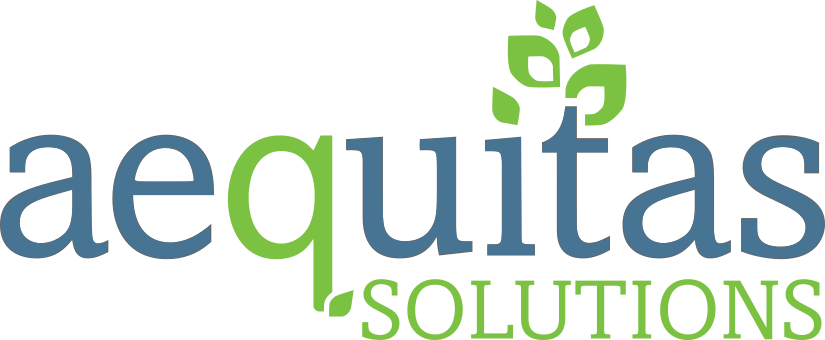As the school year winds down, educators and administrators turn their attention to planning for the next academic year. Final grades are being entered, celebrations are underway, and classrooms are slowly being packed up for summer. Amid all this activity, one important task should rise to the top of every district’s priority list: cleaning up data in the Student Information System (SIS).
This behind-the-scenes process is essential for ensuring a smooth and successful start to the next school year. Taking time before summer break to update, verify, and organize your SIS data can help reduce delays, minimize confusion, and set your entire district up for greater efficiency when the doors reopen in the fall.
Why End-of-Year Data Clean-Up Is So Important
Your SIS is more than just a data repository. It’s the system of record for almost every student-related function in your school. Whether enrolling students, assigning teachers to classrooms, reporting attendance, managing transportation, or preparing state reports, your SIS powers the process.
When data is outdated, duplicated, or incomplete, it can affect enrollment, instruction, compliance, and even student safety. Staff may waste time correcting errors, families may receive conflicting information, and students may experience delays getting the support they need.
A focused data clean-up effort ensures that:
- Fall scheduling runs efficiently
- Students are placed in the right programs and courses
- Staff are assigned appropriately based on current roles
- Reports are accurate and submitted on time
- Stakeholders trust the information they receive
3 Key Areas for SIS Data Clean-Up
Every district’s needs differ, but the following three areas are important for any successful end-of-year SIS review. Focusing your district efforts here will reduce the chances of common start-of-year disruptions and create a more seamless experience for staff, students, and families.
1. Update and Validate Rosters
Accurate student rosters are the foundation of everything from class schedules and transportation to cafeteria planning and technology distribution. If your SIS contains outdated or incorrect student information, those inaccuracies will impact student-related processes, causing bigger problems later.
Confirm student enrollment status
Before closing out the year, verify that all student enrollment statuses are correctly recorded. This verification includes using consistent exit codes and accurate withdrawal dates for students who have transferred, graduated, or left the district.
Check for promotion or retention accuracy
Work closely with academic teams to ensure that each student is placed in the correct school and grade level for the upcoming school year. Any exceptions, like retained students, should be flagged and documented.
Review course enrollment data
Finalize grades and confirm that course completion information is accurately reflected in your SIS. This ensures that student transcripts, GPA calculations, and graduation tracking are correct moving into the new year.
Clean up duplicate records
Search your SIS for any duplicate student profiles that may have been created due to manual errors or mid-year updates. Merge duplicate records to prevent confusion later and support cleaner reporting and analysis.
2. Preserve and Secure Student Records
Learn how your SIS manages historic student data. As students graduate or leave the district, their records must be preserved in accordance with local and state policies. Done right, the SIS serves as a central, digital storage repository, simplifying record preservation to ensure compliance and make it easier to access important information in the future.
Follow your district’s data retention policy
Ensure that all required data records, like transcripts, attendance records, and IEPs, are archived properly or will be digitally maintained in your SIS or other software products. Adhering to your district’s data retention guidelines also helps you stay compliant with local and state regulations.
Standardize your naming and storage conventions
When archiving hard copies of student information, use consistent folder names, labels, and file structures so records are easy to locate in the future. This helps administrators, clerks, and audit teams find what they need without delay.
Create backup copies in secure, redundant locations
Backing up your student records is essential to protect against system failures or cyber incidents. Maintaining copies in secure and encrypted locations ensures long-term access and peace of mind.
3. Review and Refresh Staff Data
In preparation for the fall, it’s also critical to ensure your staff data is accurate. Summer is a common time for staff changes, including new hires, retirements, and role shifts. Your SIS should reflect your district’s changing personnel.
Validate employment status and assignments
Review and update the status of all staff members in your SIS, including retirees, internal transfers, and incoming hires. Confirm that their assignments and roles match their responsibilities for the upcoming school year.
Verify credentials and certifications
Make sure your SIS reflects up-to-date credentials and endorsements for licensed staff.
This is especially important for compliance reporting and role-based staffing plans.
Review user access and permissions
Audit SIS permissions to ensure staff members only have access to the data they need. Revoke access for anyone leaving the district to maintain security and data integrity.
Update contact information
Ensure all staff’s phone numbers, email addresses, and emergency contacts are current. Accurate information supports better communication and is vital for emergency planning.
Going a Step Further: Bonus Clean-Up Tips
While the three areas above are foundational, districts that want to go the extra mile can also consider these additional clean-up opportunities.
Validate contact information for families
Accurate contact records allow communication tools like parent portals and messaging systems to function properly. Start-of-year announcements, schedules, and updates depend on reliable data.
Clean up discipline and intervention records
Review behavior incidents and intervention data so your district has accurate, historical insights. This information will help identify trends and determine supports that students may need in the fall.
Review attendance trends
Analyzing attendance patterns from the past year can help flag students who may need early interventions. This proactive approach supports stronger engagement and reduces chronic absenteeism.
Reconcile fees, fines, and meal balances
Now is the time to settle outstanding charges to avoid confusion or disputes during registration. Cleaning up financial records ensures smoother transitions for families and reduces administrative backlogs.
A comprehensive approach to data clean-up ensures that all departments, from the classroom to the central office, are aligned and ready for what’s next.
The Long-Term Impact of Clean SIS Data
Beyond improving day-to-day operations, strong data hygiene helps school and district leaders plan more effectively. Clean SIS data enables more accurate forecasting of enrollment trends, budget planning, staffing needs, and student support services.
When your SIS is organized, you can use it not just as a record-keeping system, but as a tool for strategic decision-making. It becomes easier to analyze what’s working, identify gaps, and take action to improve student outcomes.
Make It Easier with Q SIS
Cleaning up SIS data doesn’t have to be time-consuming or complicated. With Q SIS, districts can streamline end-of-year tasks with greater efficiency and confidence.
Q is designed for K-12 California school districts. From smart automation for record updates to customizable reports and role-based permissions, Q helps reduce manual work and increase accuracy across your data ecosystem.
With Q, you can finish the year strong and start the next one even stronger. Schedule a demo to see how Q can power your district for success.


